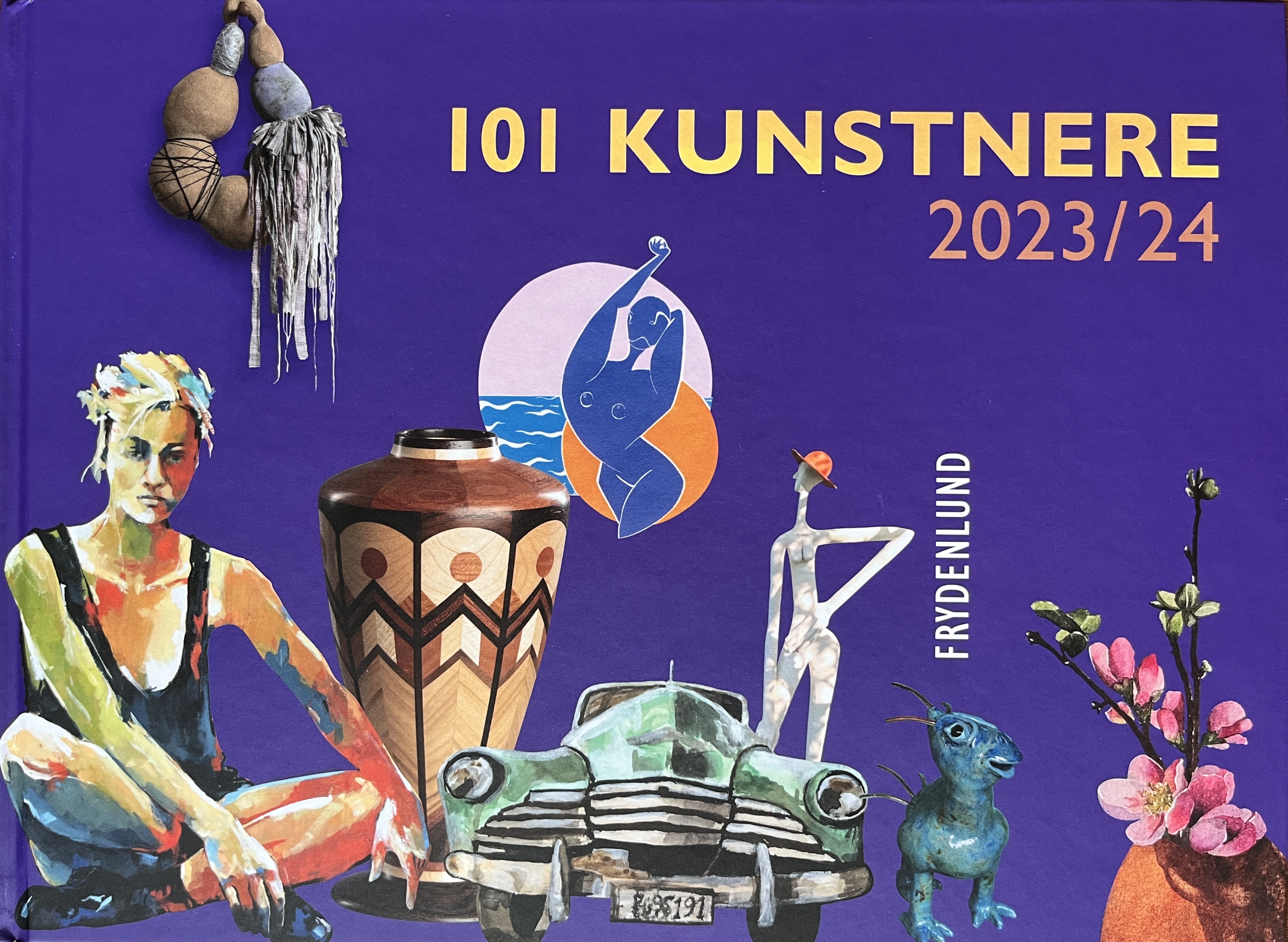Review in “101 KUNSTNERE 2023/24”
By Tom Jørgensen, art historian, art critic at Jyllands-Posten and editor of Kunstavisen.

Three paintings prove this.
“Wandering” is in many ways a typical Lisbeth Aggerbeck painting. We sense a landscape, but it is not a concrete landscape, and it is anything but naturalistically rendered. Instead of a central perspective with deep lines in the image, the composition is almost elliptically built up of tightly arranged brushstrokes and layers of color that overlap each other. As a starting point, “Wandering” is most likely inspired by a physical journey, but it is more than just a walk, it is the existential experience that interests Lisbeth Aggerbeck. In other words, what we see in “Wandering” is a process of wandering more than arriving at the precise destination. A process of wandering which is also the process of painting: being in the middle of it all, losing perspective, searching for ways out and then suddenly finding the true path, uniting with the landscape, uniting with the composition.
Read in this way, “Man and Nature” fits like a glove. Lisbeth Aggerbeck shows man, not as a passive admirer and user of nature, but as an active and integral part of it. We are all like this. In the painting you sense the contours of a human face which very appropriately almost flow with the surroundings as if to show that we are also a part of nature. Like most of the paintings, this one is built up from dark colors from which lighter and clearer tones emerge in a kind of coloristic creation process of great intensity and poetry.
The duality that lies in so many of Lisbeth Aggerbeck’s paintings is also found in “Playground”. Again, there is probably a real physical playground behind the motif, but the painting also becomes a playground for the artist who with the curiosity and immediate joy of a child investigates the surroundings, tries them out, experiments, builds them up and tears them down, because in the end, now with the adult painter’s sense of the proper composition, lets the painting be finished. All done in a way that isn’t exhaustive and boring but leaves the child’s excitement and wonder at all the amazing things intact.
Looking at Lisbeth Aggerbeck’s paintings with this in mind, you will appreciate her intense study of and cohesiveness in landscape and nature. Her fresh way of painting and intense feelings for nature resonates with the viewer who instinctively recalls their own experiences. There is probably no better starting point for a good art experience.